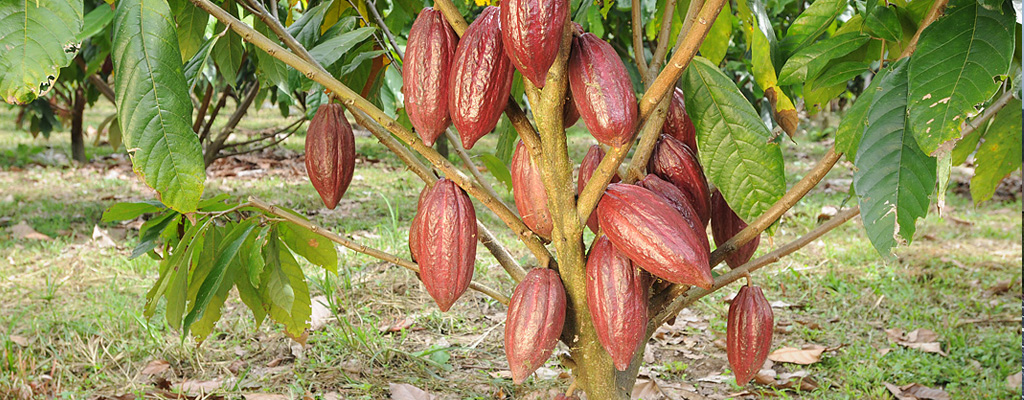Research conducted by:
Tuomas Hämälä, Eric K. Wafula, Mark J. Guiltinan, Paula E. Ralph, Claude W. dePamphilis, Peter Tiffin
Tags:
chocolate tree genetics plant variation
Research Summary:
Researchers compared the genomes of multiple strains of the cacao tree and say the insights have provided insights into more than just the chocolate tree. They say that the study has offered them a glimpse into the role genomic structural variants play in the regulation of gene expression and chromosome evolution, giving rise to the differences within populations of the plant. The researchers investigated chromosome-scale genome assemblies of 31 naturally occurring populations of Theobroma cacao, which is the source of chocolate. Among these strains, they found more than 160,000 structural variants. The team also found that most structural variants are detrimental and thus constrain adaptation of the cacao plant. Documenting the genomic differences and structural variants among the 31 strains of cacao provides a valuable resource for ongoing genetic and breeding studies for that valuable plant, according to the researchers.
How Roar played a role in this research:
Computational resources were provided by the Institute for Computational and Data Sciences at The Pennsylvania State University .
|
Article Title: |
Genomic structural variants constrain and facilitate adaptation in natural populations of Theobroma cacao, the chocolate tree |
|---|---|
|
Published In: |
PNAS |
|
Abstract: |
Genomic structural variants (SVs) can play important roles in adaptation and speciation. Yet the overall fitness effects of SVs are poorly understood, partly because accurate population-level identification of SVs requires multiple high-quality genome assemblies. Here, we use 31 chromosome-scale, haplotype-resolved genome assemblies of Theobroma cacao—an outcrossing, long-lived tree species that is the source of chocolate—to investigate the fitness consequences of SVs in natural populations. Among the 31 accessions, we find over 160,000 SVs, which together cover eight times more of the genome than single-nucleotide polymorphisms and short indels (125 versus 15 Mb). Our results indicate that a vast majority of these SVs are deleterious: they segregate at low frequencies and are depleted from functional regions of the genome. We show that SVs influence gene expression, which likely impairs gene function and contributes to the detrimental effects of SVs. We also provide empirical support for a theoretical prediction that SVs, particularly inversions, increase genetic load through the accumulation of deleterious nucleotide variants as a result of suppressed recombination. Despite the overall detrimental effects, we identify individual SVs bearing signatures of local adaptation, several of which are associated with genes differentially expressed between populations. Genes involved in pathogen resistance are strongly enriched among these candidates, highlighting the contribution of SVs to this important local adaptation trait. Beyond revealing empirical evidence for the evolutionary importance of SVs, these 31 de novo assemblies provide a valuable resource for genetic and breeding studies in T. cacao. View article on publisher's website |

